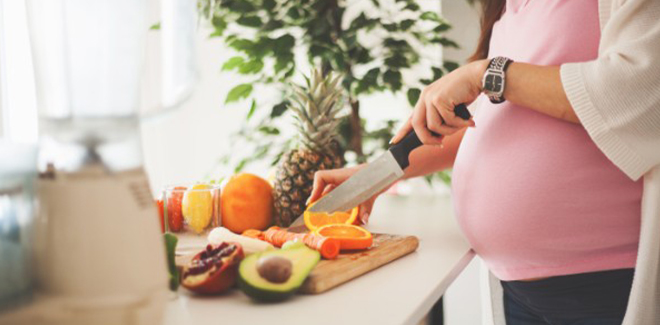- Wash hands thoroughly: Be sure to wash your hands thoroughly with soap and water before feeding your baby formula.
- Boil water: Use only fresh, cold water that has been boiled for at least one minute and then allowed to cool to room temperature. This helps to kill any bacteria that may be present in the water.
- Measure formula and water accurately: Follow the instructions on the formula package carefully when measuring formula and water. Use the scoop provided with the formula and level it off with a clean, dry knife.
- Mix formula and water carefully: Add the exact amount of formula to the water and mix carefully to avoid air bubbles. Swirl the bottle gently instead of shaking it vigorously to avoid damaging the nutrients in the formula.
- Check the temperature: Before Breastfeeding the baby, test the temperature of the formula. It should be lukewarm, not hot. You can test this by putting a few drops on your skin or on the inside of your wrist.
- Discard any unused formula: Any formula that is leftover after feeding should be discarded, as bacteria can grow quickly in formula that has been sitting out.
- Clean and sterilize equipment: Clean all bottles, nipples, and other feeding equipment thoroughly after each use, and sterilize them regularly according to the manufacturer’s instructions.
Parents should remember to always follow the directions on the formula package carefully and talk to their doctor if they have any questions or concerns about safe formula preparation.

Infant formula comes in three forms:
Infant formula is available in three main forms: powder, liquid concentrate, and ready-to-feed. Each of these forms requires safe preparation to ensure that your baby receives proper nutrition and stays healthy.
- Powder: Powdered formula is the most common form of infant formula and is generally less expensive than the other forms. To prepare powdered formula, you need to mix the powder with water. It’s important to follow the instructions on the formula package carefully when preparing powdered formula to ensure that you use the correct ratio of powder to water and that the water is boiled and then cooled to the appropriate temperature.
- Liquid concentrate: Liquid concentrate formula is a concentrated form of infant formula that requires mixing with water. To prepare liquid concentrate formula, you need to mix equal parts of the concentrate and water. Again, it’s important to follow the instructions on the formula package carefully when preparing liquid concentrate formula.
- Ready-to-feed: Ready-to-feed formula is the most convenient but also the most expensive form of infant formula. It requires no mixing and can be fed directly to your baby. However, it’s important to follow the instructions on the formula package carefully when using ready-to-feed formula to ensure that you use the correct amount and discard any leftover formula after feeding.
Regardless of the form of infant formula you choose, it’s important to prepare it safely to ensure that your baby receives the proper nutrition and stays healthy. This includes washing your hands thoroughly, using clean equipment, measuring the formula and water accurately, mixing carefully, and checking the temperature before feeding. If you have any questions or concerns about preparing infant formula safely, talk to your healthcare provider or a licensed nutritionist.

Time to add water and consumption for safe preparation of infant formula
Non-concentrated, ready-to-feed formula:
Ready-to-feed formula: Ready-to-feed formula also comes in pre-mixed containers and does not require any water to be added. Simply pour the formula from the container into a clean bottle and warm it up if desired. Ready-to-feed formula is the most convenient but also the most expensive form of infant formula.
Concentrated liquid formula & powder formula:
Concentrated liquid formula and powder formula require different amounts of water to be added to prepare them for feeding. Here are the typical amounts of water required for each type:
- Concentrated liquid formula: Concentrated liquid formula is a type of infant formula that comes in a concentrated liquid form. To prepare it for feeding, you need to add water to the concentrated formula. The instructions on the formula package will provide the recommended ratio of formula to water. In general, the ratio is one part of concentrated liquid formula to one part of water. For example, if you are using 2 ounces of concentrated liquid formula, you will need to add 2 ounces of water. It’s important to use the correct amount of water and formula to ensure that your baby receives the proper nutrition.
- Powder formula: Powdered infant formula is a type of infant formula that comes in a powder form. To prepare it for feeding, you need to mix the powder with water. The instructions on the formula package will provide the recommended ratio of formula to water. In general, the ratio is one scoop of formula for every 2 ounces of water. It’s important to use the correct amount of water and formula to ensure that your baby receives the proper nutrition.
It’s important to note that the specific amount of formula and frequency of feedings will depend on your baby’s age, weight, and individual needs. Always follow the instructions on the formula package carefully and talk to your healthcare provider if you have any questions or concerns about feeding your baby.

Amount of water to Safe preparation of infant formula
Did you know that the amount of water is very important for the Safe preparation of infant formula and that adding extra water to formula or giving water or fruit juice to babies under 6 months old can be dangerous? Recently, there have been reports of parents diluting formula to save money or giving water in addition to breast milk or formula, which can lead to a dangerous disease called water intoxication.
Babies in the first 6 months after birth do not need water or other liquids such as juices in addition to formula or breast milk, unless specifically advised by a pediatrician. Adding extra water to formula or giving juices reduces the amount of nutrients that your baby will receive, which can slow down the child’s growth and development. Extra water can also disturb electrolyte and mineral balances such as calcium, sodium, and potassium, which can lead to major health problems including seizures.
It’s essential to always mix formula as directed by the manufacturer unless specifically guided to change these instructions for infants with special health needs. If you’re using formula but having trouble affording it, there are resources available to help. Check with your pediatrician, local health department, food pantry, or social service agency for assistance.
Remember, your baby’s health is important, and proper nutrition is critical for their growth and development. So, always follow the instructions on the formula package carefully and talk to your healthcare provider if you have any questions or concerns about feeding your baby.

The health time of prepared milk powder
The length of time that a bottle of formula is good for after making it depends on the type of formula and the storage conditions. Here are some general guidelines:
- Ready-to-feed formula: Once a bottle of ready-to-feed formula has been opened, it should be used within 1 hour. Any leftover formula should be discarded.
- Non-concentrated liquid formula and concentrated liquid formula: Once a bottle of non-concentrated or concentrated liquid formula has been prepared and mixed with water, it should be used within 24 hours when stored in the refrigerator. Any leftover formula should be discarded.
- Powder formula: Once a bottle of powdered formula has been prepared and mixed with water, it should be used within 2 hours when stored at room temperature. If the formula has been refrigerated, it should be used within 24 hours. Any leftover formula should be discarded.
It’s important to note that these are general instructions and specific storage instructions for your formula may vary, so to Safe preparation of infant formula it’s best to always follow the directions on the formula package carefully and check with your healthcare provider if you have one. speak for yourself Any questions or concerns about baby feeding Additionally, it’s important to always use clean equipment and store formula in a clean, airtight container to prevent contamination and ensure your baby’s safety. .












